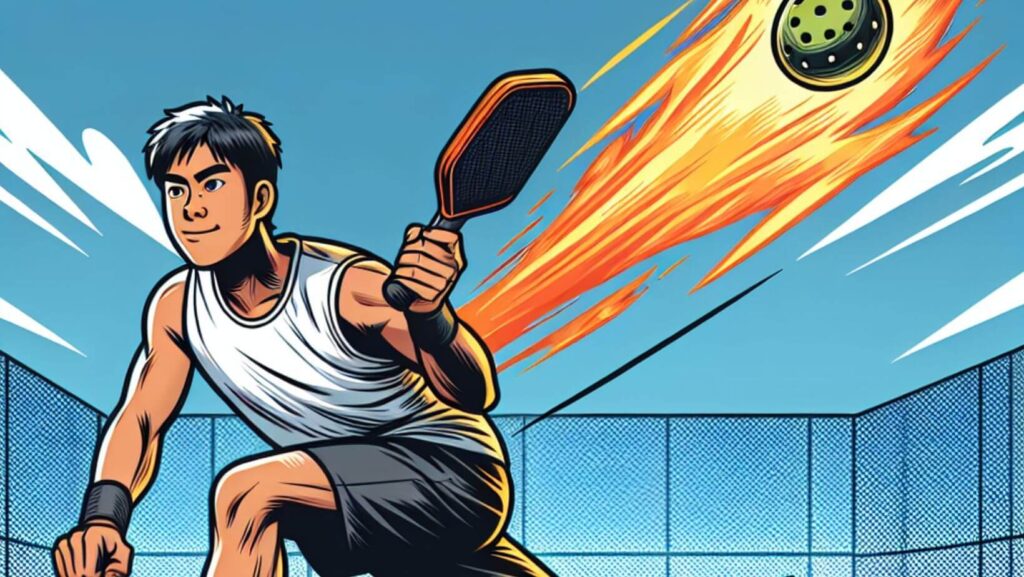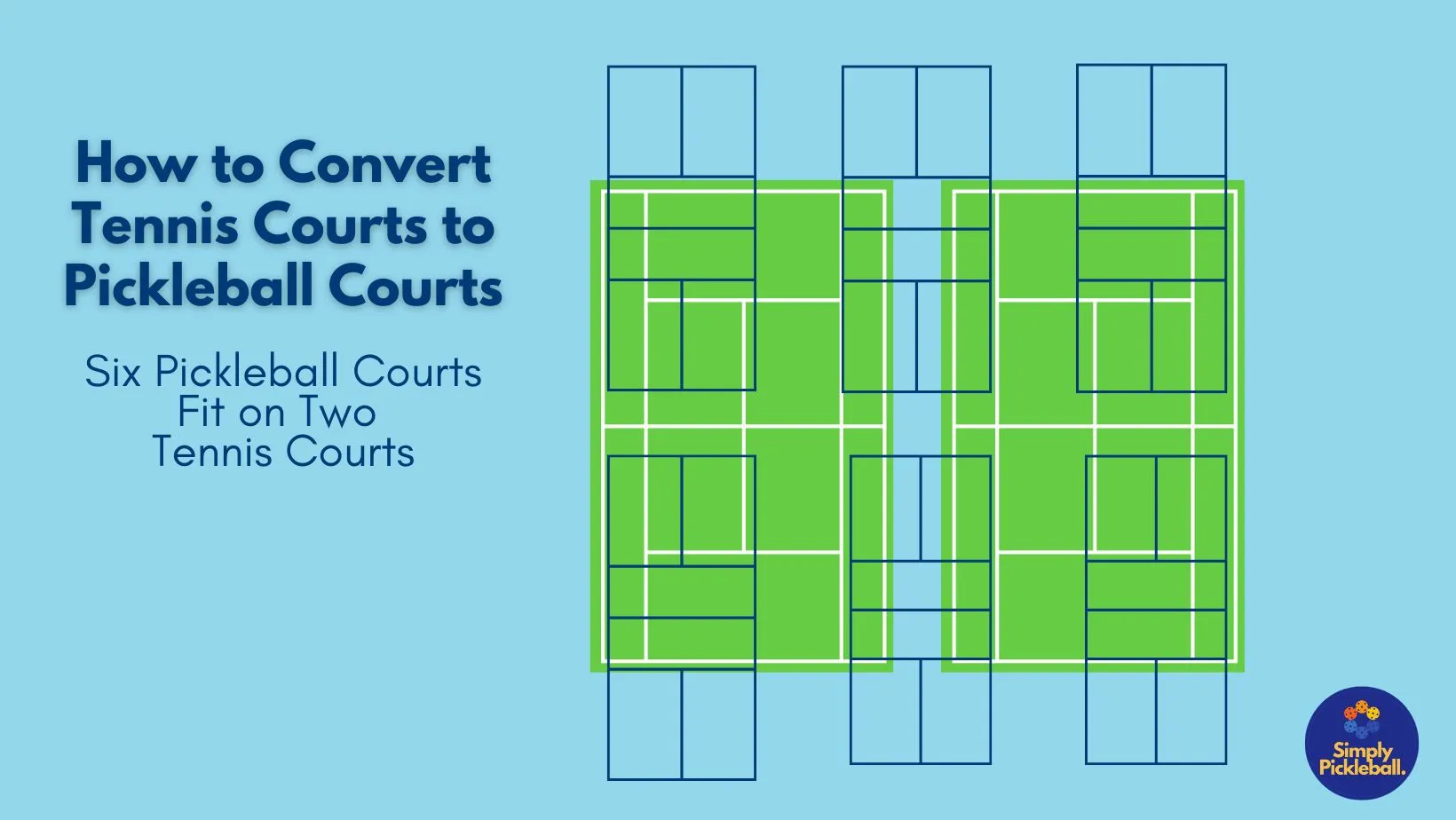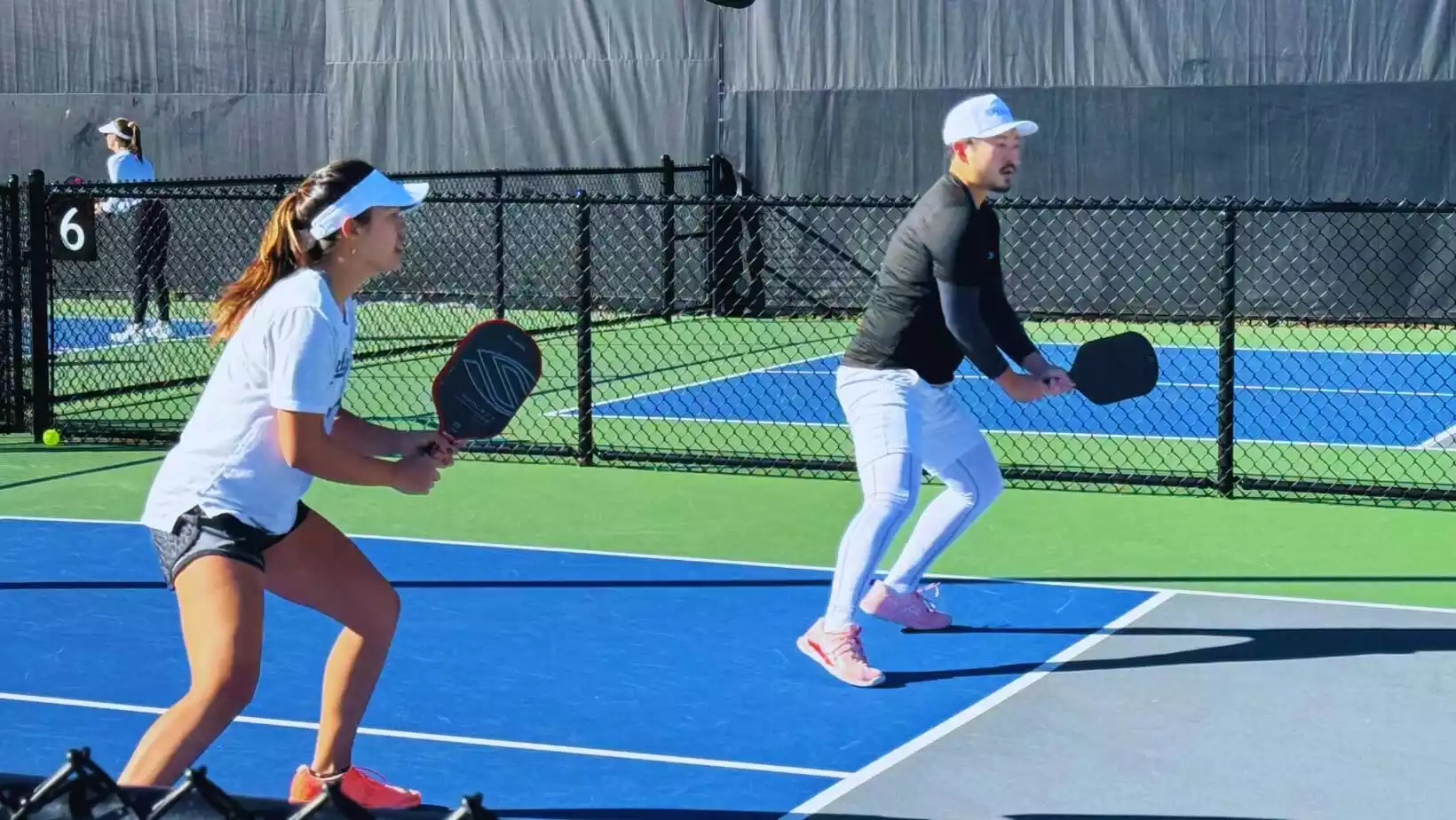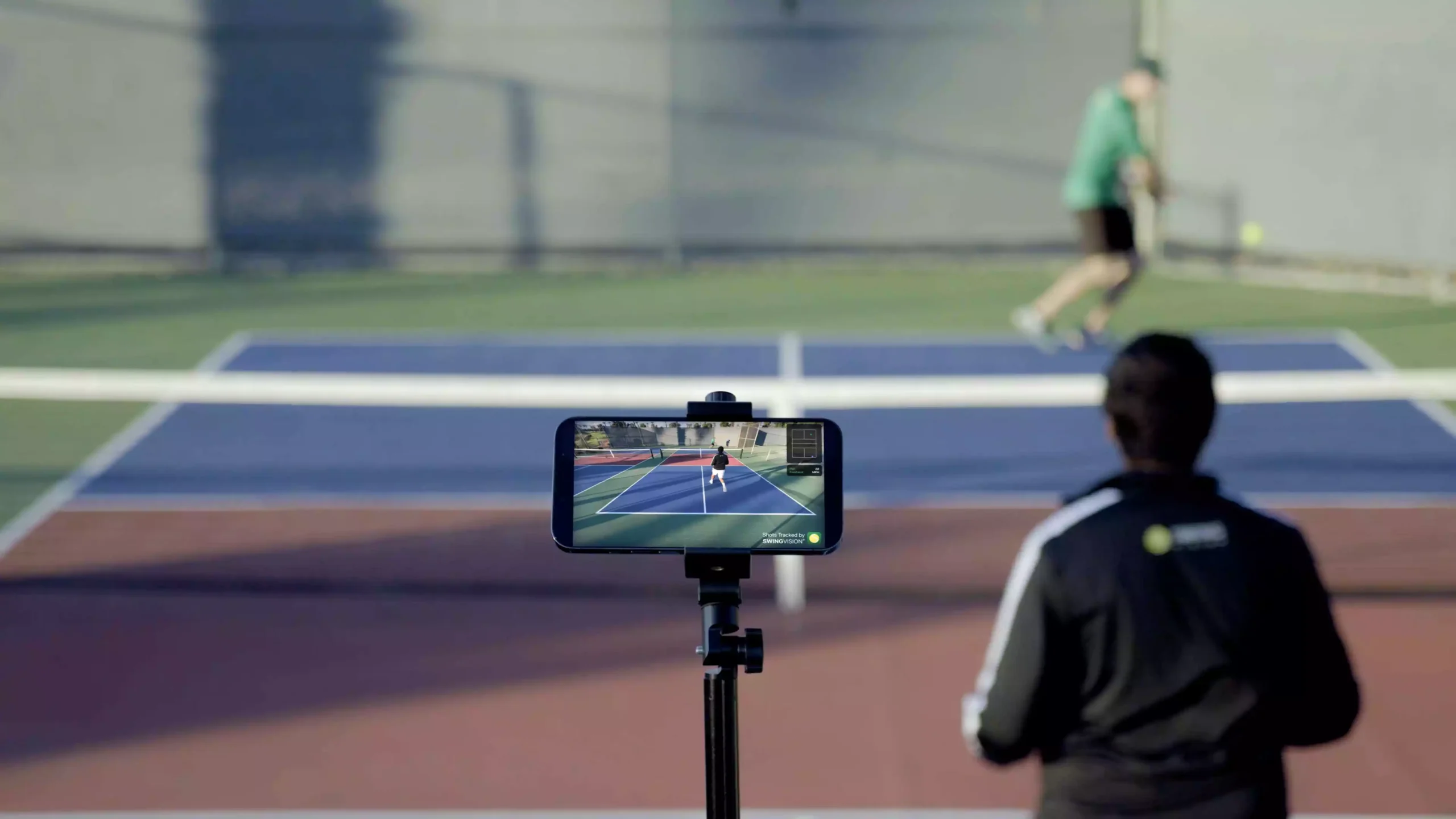Last updated on March 17th, 2024 at 03:34 pm
If you’ve watched (or played) professional pickleball for the past few years, you’ll agree that the game has gotten faster. We recently interviewed Leigh Waters (mother of Anna Leigh Waters), who said Anna Leigh had to adjust to the new power pickleball. If she didn’t make the change and increase her paddle speed, she’d lose her number-one world ranking (at 14 years old). This trend has now made its way into recreational play.
Some key reasons why pickleball has gotten faster with players hitting harder shots:
- The demographic is shifting. Pickleball started as a leisurely retirement activity and is now played by college kids and younger athletes.
- Cross-over athletes from tennis. Let’s face it: pickleball is way more fun than tennis, and tennis players have figured it out. However, tennis players generally have better mechanics and hit the ball a lot harder.
- Paddle technology. From carbon fiber to thermoforming, pickleball paddles have evolved to meet the needs of harder-hitting power players.
Table of Contents
Why You Need More Pickleball Power
A consistent third-shot drop will help you beat most beginner and intermediate players when you start playing pickleball. That should be enough to dominate players who are out of position and bangers who would continuously hit into the net.
However, as you move up the ranks, you’ll realize you need more than good dinking and third-shot drops. Advanced players have a solid net game, AND they hit the ball hard with fast paddle speed.
Adding power to your pickleball game is critical if you want to succeed. Unfortunately, it’s not as easy as taking a colossal windup and swinging harder. The only thing that will accomplish is a case of pickleball elbow.
If you’re ready for the big leagues, the following sections will show you how to add power correctly and when to use it.

The Big Picture: The Kinetic Chain
Before diving into the specifics of how to generate more pickleball power, it’s important to understand where power is generated.
The kinetic chain refers to the sequential movement and transfer of energy through different parts of your body during a pickleball shot. It involves coordinating various body segments to generate power and efficiency in your strokes.
The kinetic chain is essential for executing powerful and controlled shots in pickleball. Here’s how it typically works:
- Legs: The kinetic chain starts with the legs. You generate power by pushing off the ground with your legs, transferring energy through the kinetic chain.
- Hips and Core: As you initiate the stroke, your hips rotate, and your core muscles engage. This rotation helps transfer the energy from your lower body to your upper body.
- Shoulders and Arms: The energy generated from the legs and core is transferred to your shoulders and arms, propelling the paddle forward to strike the ball.
- Paddle: Finally, the energy is released through the paddle to the ball, generating speed and power in your shot.
Efficiently utilizing the kinetic chain in pickleball can significantly enhance the power and accuracy of your shots while reducing the risk of injury. Proper technique, timing, and coordination of these body segments are crucial to maximizing the kinetic chain’s effectiveness in your game.
Eight Tips for Adding Power to Pickleball Shots
1. Position
Solid pickleball fundamentals start with being in position. Pickleball gets a lot easier when you’re in the correct position at the correct time. You will have more time to prepare for a balanced, accurate, powerful shot. Two common examples are staying behind the baseline after you serve and immediately getting up the kitchen line after hitting a return-of-serve.
2. Eye on the ball
As your opponents start hitting the ball harder, keeping your eye on the ball becomes essential. If not, you won’t be able to react in time, and you’ll hit shots astray (a lot of popups). When hitting a shot, don’t look up until after finishing your stroke. Here are some ideas to improve hand-eye coordination.
3. Short backswing
You don’t need to take a huge swing to increase your power and speed. In most cases, you don’t need to go further back than your hip with your backswing.
A shorter backswing in pickleball includes other benefits like quicker reaction time, better control, faster shot execution, reduced telegraphing, and more efficient movement. It also allows faster and more precise shots while minimizing unnecessary motion and conserving energy.
4. Grip
You should have a relatively loose grip. It should be a 4 on a scale of 1-10. It’s similar to a golf club grip. Legendary golfer Ben Hogan once said to think of gripping your club like holding a bird. You want to grip it tight enough so it won’t fly away but not too hard that you kill it. The same, somewhat morbid, analogy works for pickleball as well.
Other benefits of a loose grip:
- Better Control: A loose grip allows for better control over the paddle. It enables players to adjust quickly and react swiftly to the ball’s trajectory.
- Reduced Injury Risk: A tight grip can strain the muscles and joints in your hand, wrist, and arm, increasing the risk of injury, such as strains or tendonitis. A looser grip helps distribute the force more evenly, reducing the strain on specific areas.
- Better Feel and Touch: A loose grip gives players a better feel for the ball. It enhances touch, enabling more finesse shots like dinks and drops.
- Relaxation and Consistency: A relaxed grip promotes overall relaxation during the game, which can lead to better consistency in strokes and shots.

5. The wrist
This is the most important part. Pickleball power comes from a wrist snap or whip. If you slow down any pro’s swing, you’ll see that their wrist is cocked, creating lag, right up until impact. At that point, they create a whipping motion that adds tremendous speed. Think of snapping a towel or hammering a nail.
6. Make contact in front of your body
You can generate more power when you strike the ball in front of your body. This is because the forward momentum of your body and paddle adds force to the shot. You should be able to see the ball hit the paddle when you make contact.
7. Hit the sweet spot
If you’re keeping your eye on the ball and hands out in front, hitting the sweet spot should be so problem. You’ll lose a lot of power when you miss the center of the paddle.
8. Hit the ball while it's descending
For pickleball power shots, always make sure the ball is descending. If it’s ascending, go for a control shot instead.
Adding Power to Your Pickleball Serve
You will become a tough pickleball opponent if you can add significant power to your serve. Remember, the most important part of the pickleball serve is to get the ball in play. You won’t be doing yourself any favors if you’re hitting hard shots that go out of bounds.
- Stance: The two common stances for pickleball serve are either open or closed. An open stance is when your feet parallel the baseline (Tyson McGuffin does this). A closed stance is more traditional, where your feet are perpendicular to the baseline. The ideal stance to optimize your power is semi-closed.
- Bend Knees: Bent knees help your hips and shoulders rotate together throughout the swing.
- Weight distribution: As the ball goes in motion and your arm goes back, the weight should be on your back foot. As you begin your follow-through, transition your weight to your forward foot.
- Stay loose: Keep your shoulders and forearm moving freely, which is the key to generating power and also preventing injury.
- Low to high: A low to high paddle motion with relaxed and natural follow-through. The paddle should finish above your opposite shoulder (your left shoulder for right-handed players).
When to Use Power In Pickleball
- Serve: The serve stands out as the sole shot in pickleball, where you possess full control without facing immediate pressure from your opponent. A forceful and deep serve has the ability to immediately put your opponent on the defensive, establishing the tone for the point.
- Third Shot Drive: Instead of opting for the conventional third shot drop, consider utilizing a powerful drive if you notice your opponents are inadequately positioned at the net or have provided a weak return. This strategy aims to place them in a defensive stance.
- Ball Above Your Waist: Whenever the ball reaches a high trajectory, particularly when it exceeds waist level, it presents an ideal opportunity to apply power. High balls lack the protective advantage of the net, allowing you to aggressively attack them.
- Counterattack: When faced with a powerful shot from your opponents that lacks proper placement (e.g., landing centrally or on your forehand), capitalize on their pace by supplementing it with your own power, executing a swift counterattack.
- Out-of-Position Opponent: If one or both of your opponents find themselves in suboptimal positions, this becomes an excellent moment to unleash a forceful shot, directing it toward an open space or directly at the out-of-position player, making a recovery challenging for them.
- Overhead Slams: Any instance where you have an overhead opportunity akin to a tennis smash warrants the utilization of your power. Aim to either conclude the point or force a weak return.
It’s also important to know when to slow things down. Using power in pickleball effectively requires careful application. Excessive power without strategy invites errors and allows opponents to counterattack. Success lies in mixing power with finesse and strategy. Hitting a soft drop when your opponents expect a hard drive is a highly effective game plan.
How to Get More Power From Your Pickleball Paddle
Choose the correct pickleball paddle for power
With so many pickleball paddles on the market, it can be overwhelming to pick the right one. You may have to try a few before finding the perfect one that suits your game. For suggestions, check out our selection of the Best Advanced Pickleball Paddles. Here are a few guidelines for selecting a pickleball paddle for power:
- Surface material: Common surface materials for pickleball paddles are wood, fiberglass, graphite, and carbon fiber. While fiberglass pickleball paddles may generate the most power, they don’t have good control. Carbon fiber pickleball paddles are better because they combine power and control.
- Paddle thickness: Pickleball paddles are usually between 13mm and 19mm thick. The thinner 13mm and 14mm paddles are better for power, while the 16 mm+ paddles are better for control.
- Weight: Most paddles weigh between 7 – 8.5 oz. Choosing a heavier paddle is ideal for adding power to your shots. However, it’s crucial to note that heavy paddles might not suit new players well due to the increased need for control and precision, skills that beginners often lack. Additionally, using a heavier paddle can worsen fatigue if you have arm-related health concerns. Despite these considerations, players seeking more power in their shots will appreciate the extra weight.
Adding weight to your paddle
Most professional pickleball players play with paddles over 9 oz. You must add weight since stock paddles typically weigh less than 9 oz. For instructions on adding lead tape, please review our guide: How to Add Lead Tape to Your Pickleball Paddle.
Pickleball Power Drills
The best way to improve your pickleball game is with a coach or reputable pickleball camp. Training videos are the next best thing if you don’t have time or money for camp or lessons. I’ve found Jordan Briones from PrimeTimePickleball to have some of the best YouTube pickleball tutorials:
Hitting the Sweet Spot
Powerful Serves
Forehand Drives
How to Avoid Common Mistakes
Over-Swinging
Swinging too forcefully can cause a lack of control and decreased accuracy. This often happens when players neglect proper follow-through and, in trying to fix it, end up making things worse.
Rather than overcompensating, concentrate on smooth and controlled movements to create power without sacrificing accuracy. Imagine your arm as a whip, smoothly snapping through the shot with a relaxed, fluid motion.
Missing the Sweet Spot
Hitting the ball precisely at the center of the paddle face is essential for both power and accuracy. This maximizes the paddle’s sweet spot, providing the best energy transfer for your shot. Inaccurate ball contact can stem from misalignment in your body positioning, mistimed swings, or a lack of familiarity with your paddle’s sweet spot.
To enhance your ball contact, focus on refining your footwork and timing to ensure you’re well-positioned for a solid hit. Stay attentive to the ball’s trajectory and maintain visual contact until the point of impact.
A fast way to increase your precision and accuracy is with pickleball training aids.
Poor follow-through
Many players tend to cut their swing short, leading to shots that lack power and control. Ensure your arm completes the full follow-through, extending fully with the paddle, finishing high, and sweeping across your body. This action is crucial for preserving the intended path of the shot and adding extra power.
Rushing the shot
Another frequently seen error among players is inadvertently rushing the stroke. While aiming to boost power, swinging too soon often sacrifices technique for speed, particularly evident in players rushing their power forehand shots.
To counter this, prioritize the setup of your shot. Please take the time to focus on correct footwork, weight distribution, and paddle preparation.
Being in the correct position is essential. Anticipate where you need to be before your opponent hits their shot. You’ll have a low chance of success if you’re still running to get in position while hitting the shot.
Pickleball Power: Conclusion
Adding power to your pickleball game is critical to play at an advanced level. By emphasizing proper stance, grip, and swing technique, you can enhance both the accuracy and force behind your shots. It’s essential to recognize that this isn’t solely about strength; it involves the coordinated effort of your entire body to generate control and power.
Consistent practice will yield gradual improvement, positioning you to outmaneuver opponents on the court. As this skill develops, pickleball becomes more exhilarating and fulfilling. The excitement of nailing that flawless shot and witnessing opponents scramble to return it—these moments define the sport’s allure.
Remember, mastering pickleball power is a journey requiring time and commitment. Embrace the learning curve, stay patient, and acknowledge that even the pros began at square one. You’ll unlock your full power potential in pickleball through persistence, determination, and the right equipment.
Join thousands of fellow pickleball players from around the world. Subscribe today!








